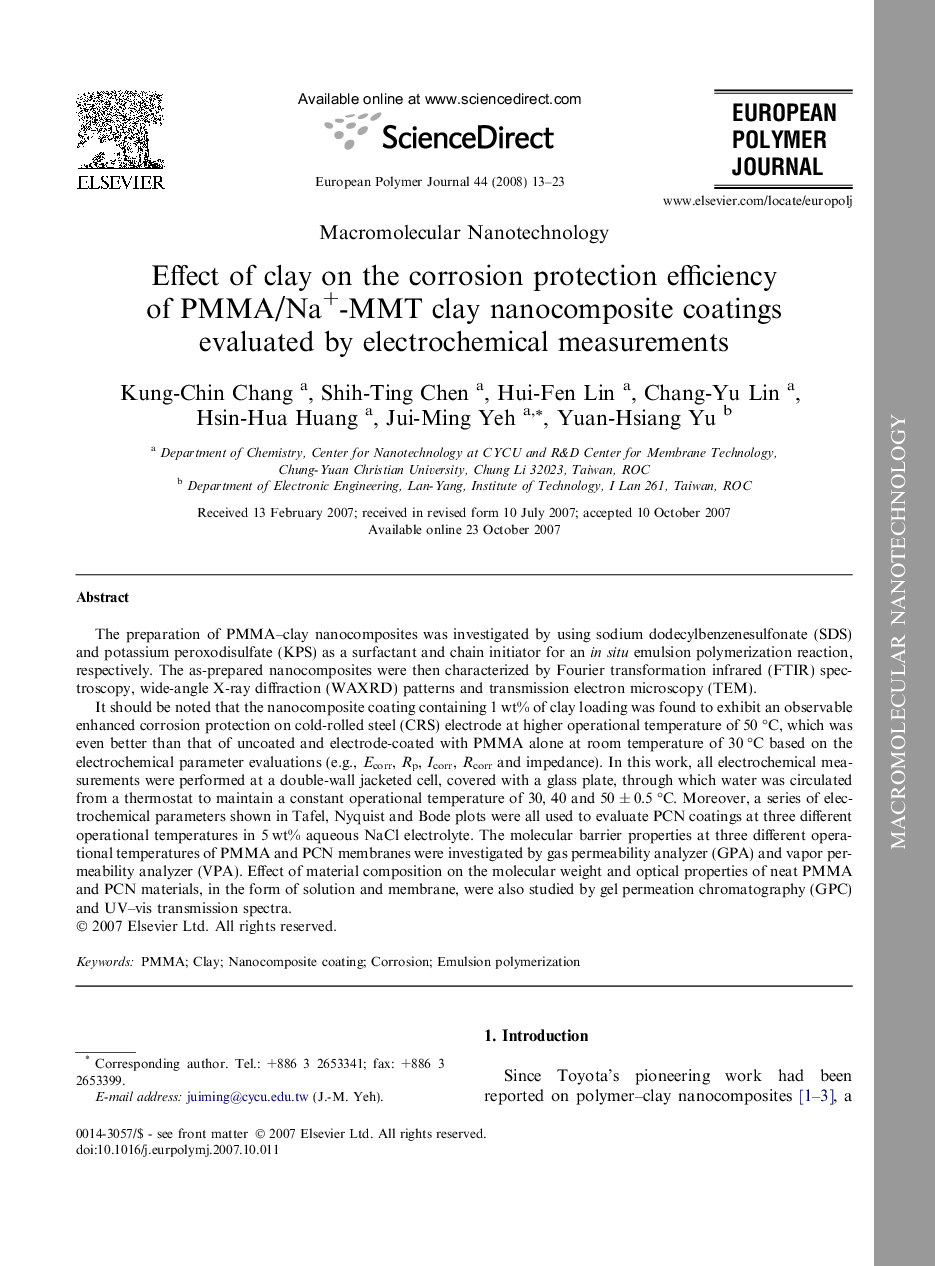| Article ID | Journal | Published Year | Pages | File Type |
|---|---|---|---|---|
| 1401084 | European Polymer Journal | 2008 | 11 Pages |
The preparation of PMMA–clay nanocomposites was investigated by using sodium dodecylbenzenesulfonate (SDS) and potassium peroxodisulfate (KPS) as a surfactant and chain initiator for an in situ emulsion polymerization reaction, respectively. The as-prepared nanocomposites were then characterized by Fourier transformation infrared (FTIR) spectroscopy, wide-angle X-ray diffraction (WAXRD) patterns and transmission electron microscopy (TEM).It should be noted that the nanocomposite coating containing 1 wt% of clay loading was found to exhibit an observable enhanced corrosion protection on cold-rolled steel (CRS) electrode at higher operational temperature of 50 °C, which was even better than that of uncoated and electrode-coated with PMMA alone at room temperature of 30 °C based on the electrochemical parameter evaluations (e.g., Ecorr, Rp, Icorr, Rcorr and impedance). In this work, all electrochemical measurements were performed at a double-wall jacketed cell, covered with a glass plate, through which water was circulated from a thermostat to maintain a constant operational temperature of 30, 40 and 50 ± 0.5 °C. Moreover, a series of electrochemical parameters shown in Tafel, Nyquist and Bode plots were all used to evaluate PCN coatings at three different operational temperatures in 5 wt% aqueous NaCl electrolyte. The molecular barrier properties at three different operational temperatures of PMMA and PCN membranes were investigated by gas permeability analyzer (GPA) and vapor permeability analyzer (VPA). Effect of material composition on the molecular weight and optical properties of neat PMMA and PCN materials, in the form of solution and membrane, were also studied by gel permeation chromatography (GPC) and UV–vis transmission spectra.
